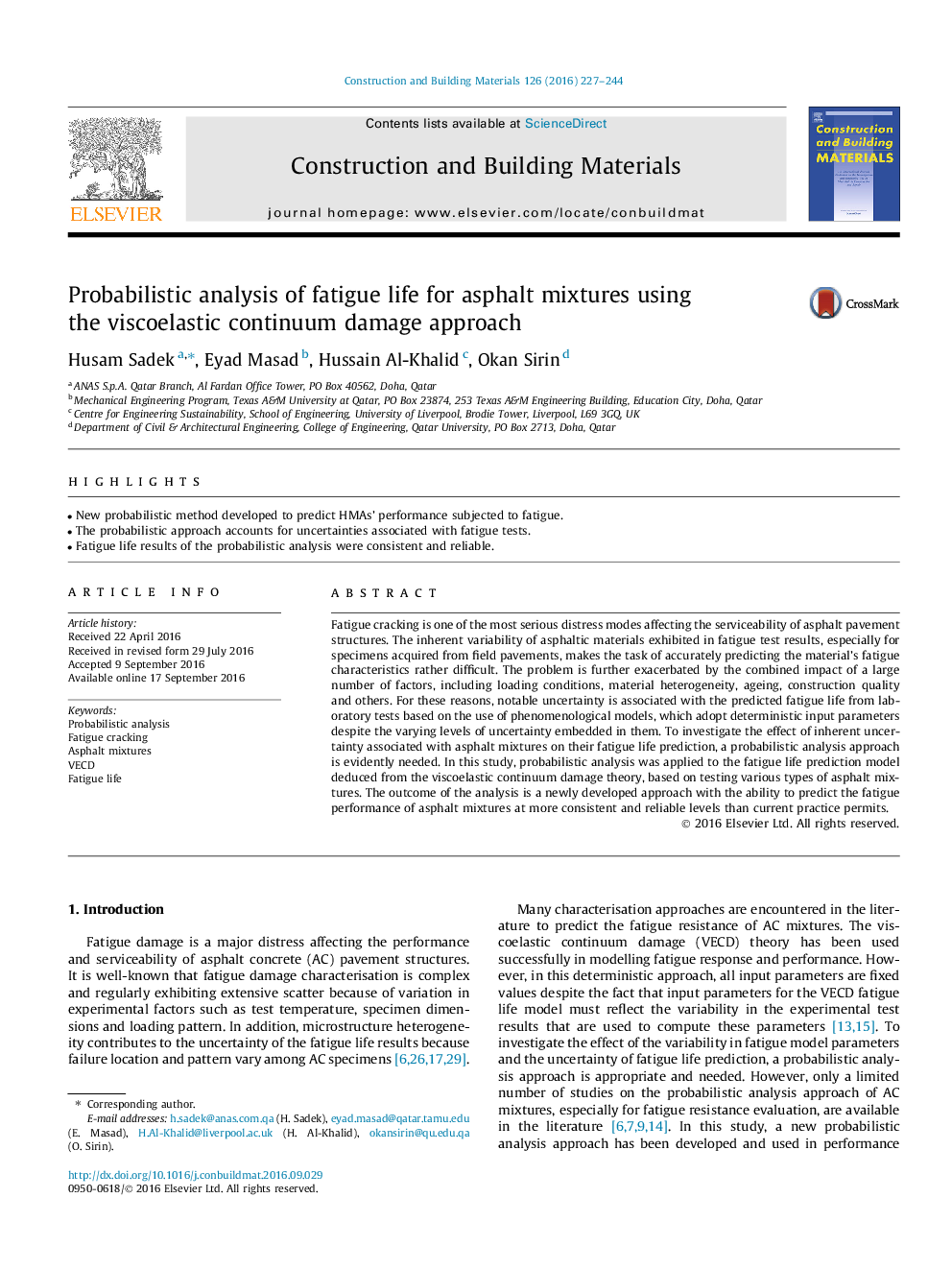| Article ID | Journal | Published Year | Pages | File Type |
|---|---|---|---|---|
| 6480854 | Construction and Building Materials | 2016 | 18 Pages |
â¢New probabilistic method developed to predict HMAs' performance subjected to fatigue.â¢The probabilistic approach accounts for uncertainties associated with fatigue tests.â¢Fatigue life results of the probabilistic analysis were consistent and reliable.
Fatigue cracking is one of the most serious distress modes affecting the serviceability of asphalt pavement structures. The inherent variability of asphaltic materials exhibited in fatigue test results, especially for specimens acquired from field pavements, makes the task of accurately predicting the material's fatigue characteristics rather difficult. The problem is further exacerbated by the combined impact of a large number of factors, including loading conditions, material heterogeneity, ageing, construction quality and others. For these reasons, notable uncertainty is associated with the predicted fatigue life from laboratory tests based on the use of phenomenological models, which adopt deterministic input parameters despite the varying levels of uncertainty embedded in them. To investigate the effect of inherent uncertainty associated with asphalt mixtures on their fatigue life prediction, a probabilistic analysis approach is evidently needed. In this study, probabilistic analysis was applied to the fatigue life prediction model deduced from the viscoelastic continuum damage theory, based on testing various types of asphalt mixtures. The outcome of the analysis is a newly developed approach with the ability to predict the fatigue performance of asphalt mixtures at more consistent and reliable levels than current practice permits.
